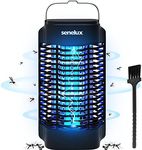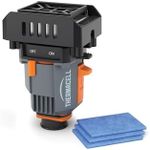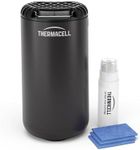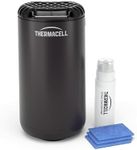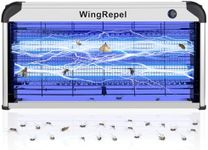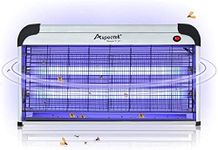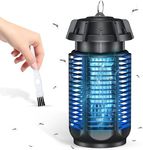Buying Guide for the Best Mosquito Traps
Choosing the right mosquito trap can significantly improve your comfort and health by reducing the number of mosquitoes in your environment. When selecting a mosquito trap, it's important to consider the size of the area you need to cover, the type of mosquitoes you're dealing with, and the trap's method of operation. Understanding these factors will help you choose a trap that is both effective and convenient for your specific needs.Coverage AreaCoverage area refers to the size of the space that the mosquito trap can effectively protect. This is important because a trap that covers too small an area may not be effective, while one that covers too large an area might be unnecessary. Coverage areas are usually measured in square feet or meters. For small patios or rooms, a trap with a coverage of up to 500 square feet might suffice. For larger yards or open spaces, look for traps that cover 1,000 square feet or more. Choose a trap that matches the size of the area you need to protect to ensure optimal performance.
Type of TrapMosquito traps come in various types, including electric, propane, and adhesive traps. The type of trap is important because it determines how mosquitoes are attracted and captured. Electric traps use UV light to lure mosquitoes, propane traps mimic human breath by releasing carbon dioxide, and adhesive traps use sticky surfaces to catch mosquitoes. If you need a trap for indoor use, electric traps are often preferred due to their safety and ease of use. For outdoor areas, propane traps can be more effective as they cover larger areas and attract mosquitoes from a distance. Consider where you will use the trap and choose the type that best suits your environment.
Power SourceThe power source of a mosquito trap can affect its portability and convenience. Traps can be powered by electricity, batteries, or propane. Electric traps need to be plugged into an outlet, which can limit their placement but ensures continuous operation. Battery-powered traps offer more flexibility in placement but require regular battery changes. Propane traps are typically used outdoors and need propane tanks, which can be more costly but offer greater coverage. Consider where you will place the trap and how often you are willing to maintain it when choosing the power source.
Noise LevelNoise level is an important consideration, especially if you plan to use the trap indoors or in quiet environments. Some traps, particularly electric ones, can produce a noticeable humming or buzzing sound. If noise is a concern, look for traps that are specifically designed to operate quietly. For outdoor use, noise may be less of an issue, but it's still worth considering if you plan to use the trap near living or sleeping areas. Choose a trap with a noise level that you find acceptable for your intended use.
Maintenance RequirementsMaintenance requirements refer to how often and how easily a mosquito trap needs to be cleaned or serviced. This is important because a trap that is difficult to maintain may not be used as effectively. Some traps require regular emptying of catch containers or replacement of attractants, while others may need periodic cleaning to remove debris. Consider how much time and effort you are willing to invest in maintaining the trap. If you prefer low-maintenance options, look for traps with easy-to-clean designs or those that require minimal upkeep.

